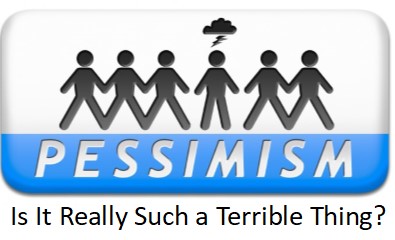First a quote: “I like pessimists. They’re always the ones who bring life jackets for the boat.”
― Lisa Kleypas, author
If you’ve been following me for a while, you know I like to write about positive energy and how important it is for leaders to be forward looking, optimistic and creators of hope, confidence, trust, promoters of opportunity and a better world for all. (see links below) Today, I focus on the opposite end of the optimistic/pessimistic continuum.
I am often asked to deliver workshops demonstrating the importance of diversity and the role of diversity in an organization’s success. As you might correctly assume, there is often a focus on gender, ethnicity, age and sexual orientation in most diversity initiatives. Those are certainly important topics and at the same time, the importance of diversity extends well beyond those critical topics.
There is also a need for diversity in terms of personalities, working styles and leadership tendencies. Just to give a few examples, please consider:
- Task vs relational approaches to leadership (management vs leadership)
- Internally focused vs externally focused leaders and organizations
- Continuous improvement vs process reengineering solutions
- Preserve the core vs stimulate progress
- Be fast & bold vs think it through, be methodical & measured
And today, this article is about the age-old battle between optimists and pessimists. Which is more important? What style is better? I submit here that both are important, and both are needed for the long-term success and survival of our organizations. I often address this topic while teaching strategic thinking skills and best practices.
While pontificating on the importance of positive leadership with the senior leadership team from one of the country’s largest food companies, a senior executive interrupted with the following comment; from memory, I quote: “It is irresponsible for senior leaders to not be pessimistic! If someone isn’t concerned with ‘what could wrong’, they are not doing their job. Not being prepared for the worst could be devastating. In our case as a food company, we could be responsible for a serious food borne illness, our ‘brand’ could be severely damaged, we could be forced to close plants and lay off employees. We should all be skilled at being pessimistic. I agree, knowing how and when to express that pessimism is also important.”
Let’s think about the tragic sinking of the Titanic in 1912 for a moment. Pretend you were a member of the engineering team finalizing the ship’s ultimate design. Can you imagine participating in an engineering design meeting discussing the number of lifeboats to be included on the ship? Would a more critical view of the plan have resulted in more than 20 lifeboats on a ship believed to be unsinkable? (As a point of reference, on the Titanic’s maiden voyage, it was sailing at capacity, with slightly more than 2,200 people on board. The 20 lifeboats had a maximum capacity of less than 1,200 people.)
Or, what if Captain Edward Smith would have listened to numerous reports of icebergs in the area? What if there had been a healthier debate or discussion about the potential dangers in the waters ahead? Would a more pessimistic view have prevailed? Might they have slowed down or taken a more southerly route?
Again, I offer for your consideration this is not a matter of which style is better or more important. This is about valuing diversity of thinking styles and approaches. While admitting to oversimplifying a complex topic, optimists tend to be hard-wired to see opportunities; pessimists tend to be hard-wired to see problems. Leaders need to be good at both, or at least see the need to surround themselves with both perspectives. They need to value spirited debate on important issues. Patrick Lencioni discusses this topic in his very popular book called “Five Dysfunctions of a Team”. Worth a read!
 What if the food company executive’s viewpoint about “pessimistic thinking” were a part of the decision process on the Titanic’s bridge that fateful night, April 15th of 1912? We’ll obviously never know however, we might all learn from history.
What if the food company executive’s viewpoint about “pessimistic thinking” were a part of the decision process on the Titanic’s bridge that fateful night, April 15th of 1912? We’ll obviously never know however, we might all learn from history.
When making important decisions, it is not an either/or decision, both optimistic and pessimistic factors should be discussed and debated as part of the process.
In terms of leadership style, my personal preference is to be strategically pessimistic as opposed to habitually pessimistic. If you’re a natural optimist, you likely need to be better at seeing potential problems. And if you’re a natural pessimist, you likely need to be better at seeing opportunities. Bottom line, as much as we find our conflicting styles to be mutually irritating, we do need each other. Just another example of the balanced need for diversity.
What are your thoughts on this topic? I welcome your comments; here are two specific questions:
- “If you were a mentor or career coach, what advice would you give people in quest of balancing optimism and pessimism as a leader?”
- How can leaders express pessimistic concerns, debate critical data or decisions, and at the same time, build hope, positive energy and optimism for successful outcomes?
Related articles on this topic:
Is Your Leadership Energy Positive or Negative?
Is Your Attitude Intentional or Accidental?
Filler or Drainer? Which are You?
How Many Positive Ripples Will You Create Today?
Beauty on a Dreary Day
How will you lead differently, or better this week? Now is the time to give that question a little thought.
Have a great week!
Sincerely,
Bryan Yager
208.376.1701
“Expanding Your Capacity for Success”

